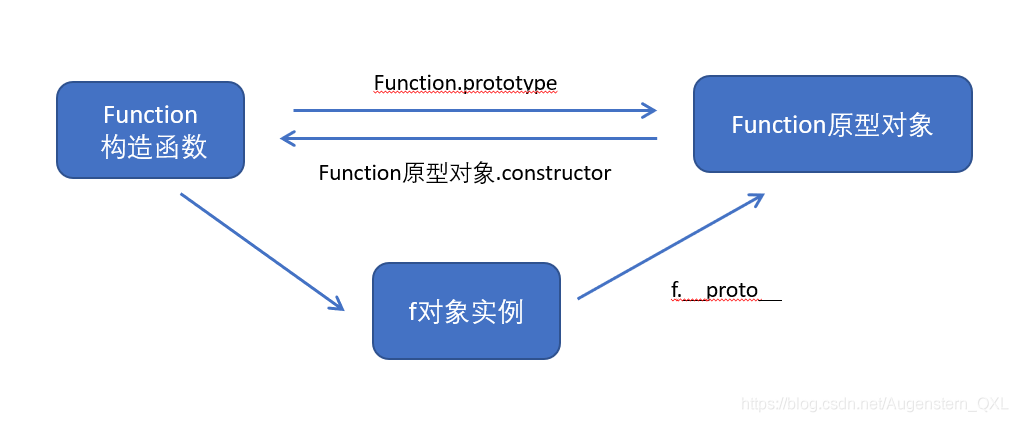面向对象更贴近我们的实际生活, 可以使用面向对象描述现实世界事物. 但是事物分为具体的事物和抽象的事物
面向对象的思维特点:
抽取(抽象)对象共用的属性和行为组织(封装)成一个类(模板)
对类进行实例化, 获取类的对象
1.1、对象 在 JavaScript 中,对象是一组无序的相关属性和方法的集合,所有的事物都是对象,例如字符串、数值、数组、函数等。
对象是由属性和方法组成的
属性:事物的特征,**在对象中用**属性 来表示
方法:事物的行为,**在对象中用**方法 来表示
1.2、类 在 ES6 中新增加了类的概念,可以使用 class 关键字声明一个类,之后以这个类来实例化对象。
类抽象了对象的公共部分,它泛指某一大类(class)
对象特指某一个,通过类实例化一个具体的对象
1.2.1、创建类 注意:类必须使用new 实例化对象
1.2.2、构造函数 constructor() 方法是类的构造函数(默认方法),用于传递参数,返回实例对象,通过 new 命令生成对象实例时,自动调用该方法。如果没有显示定义, 类内部会自动给我们创建一个 constructor()
1 2 3 4 5 6 7 8 9 10 11 12 13 14 15 16 <script> class Star { constructor (uname, age ) { this .uname = uname; this .age = age; } } var ldh = new Star ('刘德华' , 18 ); var zxy = new Star ('张学友' , 20 ); console .log (ldh); console .log (zxy); </script>
通过 class 关键字创建类,类名我们还是习惯性定义首字母大写
类里面有个 constructor函数,可以接收传递过来的参数,同时返回实例对象
constructor函数只要 new 生成实例时,就会自动调用这个函数,如果我们不写这个函数,类也会自动生成这个函数最后注意语法规范
创建类 ➡ 类名后面不要加小括号
生成实例 ➡ 类名后面加小括号
构造函数不需要加 function 关键字
1.2.3、类中添加方法 语法:
1 2 3 4 5 6 7 8 9 10 11 12 class Person { constructor (name, age ) { this .name = name this .age = age } say ( console .log (this .name + '你好' ) } } var ldh = new Person ('刘德华' , 18 )ldh.say ()
注意 : 方法之间不能加逗号分隔,同时方法不需要添加 function 关键字。
1 2 3 4 5 6 7 8 9 10 11 12 13 14 15 16 17 18 19 20 21 22 23 <script> class Star { constructor (uname, age ) { this .uname = uname; this .age = age; } sing (song ) { console .log (this .uname + song); } } var ldh = new Star ('刘德华' , 18 ); var zxy = new Star ('张学友' , 20 ); console .log (ldh); console .log (zxy); ldh.sing ('冰雨' ); zxy.sing ('李香兰' ); </script>
类的共有属性放到constructor 里面
类里面的函数都不需要写 function 关键字
1.3 、类的继承 现实中的继承:子承父业,比如我们都继承了父亲的姓。
程序中的继承:子类可以继承父类的一些属性和方法。
语法:
1 2 3 4 class Father {}class Son extends Father {}
看一个实例:
1 2 3 4 5 6 7 8 9 10 11 12 13 14 15 16 17 18 19 20 21 22 23 24 25 26 27 28 <script> class Father { constructor (x, y ) { this .x = x; this .y = y; } sum ( console .log (this .x + this .y ); } } class Son extends Father { constructor (x, y ) { super (x, y); this .x = x; this .y = y; } subtract ( console .log (this .x - this .y ); } } var son = new Son (5 , 3 ); son.subtract (); son.sum (); </script>
1.4、super 关键字
super 关键字用于访问和调用对象父类上的函数,可以调用父类的构造函数,也可以调用父类的普通函数
1.4.1、调用父类的构造函数 语法:
1 2 3 4 5 6 7 8 9 10 11 12 13 class Person { constructor (surname ){ this .surname = surname; } } class Student entends Person { constructor (surname,firstname ) { super (surname); this .firstname = firstname; } }
注意:子类在构造函数中使用 super,必须放到 this 前面(必须先调用父类的构造方法,在使用子类构造方法)
案例:
1 2 3 4 5 6 7 8 9 10 11 12 13 14 15 16 17 18 19 20 21 22 23 class Father { constructor (surname ){ this .surname = surname; } saySurname ( console .log ('我的姓是' + this .surname ); } } class Son entends Father { constructor (surname,firstname ) { super (surname); this .firstname = firstname; } sayFirstname ( console .log ('我的名字是:' + this .firstname ); } } var damao = new Son ('刘' ,'德华' );damao.saySurname (); damao.sayFirstname ();
1.4.2、调用父类的普通函数 语法:
1 2 3 4 5 6 7 8 9 10 11 12 13 14 class Father { say ( return '我是爸爸' } } class Son extends Father { say ( return super .say () + '的儿子' } } var damao = new Son ()console .log (damao.say ())
多个方法之间不需要添加逗号分隔
继承中属性和方法的查找原则:就近原则,先看子类,再看父类
1.4、三个注意点
在 ES6 中类没有变量提升,所以必须先定义类,才能通过类实例化对象
类里面的共有属性和方法一定要加 this使用
类里面的 this 指向:
constructor 里面的 this指向实例对象
方法里面的this指向这个方法的调用者
1 2 3 4 5 6 7 8 9 10 11 12 13 14 15 16 17 18 19 20 21 22 23 24 25 26 27 28 29 30 31 32 33 34 35 36 <body> <button > 点击</button > <script > var that; var _that; class Star { constructor (uname, age ) { that = this ; this .uname = uname; this .age = age; this .btn = document .querySelector ('button' ); this .btn .onclick = this .sing ; } sing ( console .log (that.uname ); } dance ( _that = this ; console .log (this ); } } var ldh = new Star ('刘德华' ); console .log (that === ldh); ldh.dance (); console .log (_that === ldh); </script > </body>
2、构造函数和原型 2.1、概述 在典型的 OOP 的语言中(如 Java),都存在类的概念,类就是对象的模板,对象就是类的实例,但在 ES6 之前, JS 中并没用引入类的概念。
ES6, 全称 ECMAScript 6.0 ,2015.06 发版。但是目前浏览器的 JavaScript 是 ES5 版本,大多数高版本的浏览器也支持 ES6,不过只实现了 ES6 的部分特性和功能。
在 ES6 之前 ,对象不是基于类创建的,而是用一种称为构建函数的特殊函数来定义对象和它们的特征。
创建对象有三种方式
对象字面量 new Object() 自定义构造函数
1 2 3 4 5 6 7 8 9 10 11 12 13 14 15 var obj1 = new Object ();var obj2 = {};function Star (uname,age ) { this .uname = uname; this .age = age; this .sing = function ( console .log ('我会唱歌' ); } } var ldh = new Star ('刘德华' ,18 );
注意:
构造函数用于创建某一类对象,其首字母要大写
构造函数要和new一起使用才有意义
2.2、构造函数
构造函数是一种特殊的函数,主要用来初始化对象(为对象成员变量赋初始值),它总与new一起使用
我们可以把对象中的一些公共的属性和方法抽取出来,然后封装到这个函数里面
new 在执行时会做四件事
在内存中创建一个新的空对象。
让 this 指向这个新的对象。
执行构造函数里面的代码,给这个新对象添加属性和方法。
返回这个新对象(所以构造函数里面不需要 return )。
2.2.1、静态成员和实例成员 JavaScript 的构造函数中可以添加一些成员,可以在构造函数本身上添加,也可以在构造函数内部的this上添加。通过这两种方式添加的成员,就分别称为静态成员和实例成员。
静态成员: 在构造函数本身上添加的成员为静态成员,只能由构造函数本身来访问
实例成员: 在构造函数内部创建的对象成员称为实例成员,只能由实例化的对象来访问
1 2 3 4 5 6 7 8 9 10 11 12 13 14 15 16 17 18 19 20 function Star (uname, age ) { this .uname = uname this .age = age this .sing = function ( console .log ('我会唱歌' ) } } var ldh = new Star ('刘德华' , 18 )ldh.sing () Star .uname Star .sex = '男' Star .sex ldh.sex
2.2.2、构造函数的问题 构造函数方法很好用,但是存在浪费内存的问题。
我们希望所有的对象使用同一个函数,这样就比较节省内存
2.3、构造函数原型 prototype
构造函数通过原型分配的函数是所有对象所共享的,这样就解决了内存浪费问题
JavaScript 规定,每一个构造函数都有一个prototype属性,指向另一个对象,注意这个prototype就是一个对象,这个对象的所有属性和方法,都会被构造函数所拥有
我们可以把那些不变的方法,直接定义在prototype 对象上,这样所有对象的实例就可以共享这些方法
1 2 3 4 5 6 7 8 9 10 11 12 13 14 15 16 17 18 19 20 21 22 23 <body> <script > function Star (uname, age ) { this .uname = uname; this .age = age; } Star .prototype sing = function ( console .log ('我会唱歌' ); } var ldh = new Star ('刘德华' , 18 ); var zxy = new Star ('张学友' , 19 ); console .log (ldh.sing === zxy.sing ); ldh.sing (); zxy.sing (); </script > </body>
一般情况下,我们的公共属性定义到构造函数里面, 公共的方法我们放到原型对象身上
问答:原型是什么?
一个对象,我们也称为 prototype 为原型对象
问答:原型的作用是什么?
2.4、对象原型 __proto__
对象都会有一个属性 _proto_ 指向构造函数的prototype原型对象,之所以我们对象可以使用构造函数prototype 原型对象的属性和方法,就是因为对象有_proto_原型的存在。
_proto_对象原型和原型对象 prototype 是等价的_proto_对象原型的意义就在于为对象的查找机制提供一个方向,或者说一条路线,但是它是一个非标准属性,因此实际开发中,不可以使用这个属性,它只是内部指向原型对象 prototype
Star.prototype 和 ldh._proto_ 指向相同
1 2 3 4 5 6 7 8 9 10 11 12 13 14 15 16 17 18 19 <body> <script > function Star (uname, age ) { this .uname = uname; this .age = age; } Star .prototype sing = function ( console .log ('我会唱歌' ); } var ldh = new Star ('刘德华' , 18 ); var zxy = new Star ('张学友' , 19 ); ldh.sing (); console .log (ldh); console .log (ldh.__proto__ === Star .prototype </script > </body>
2.5、constructor 构造函数
对象原型(** proto **) 和构造函数(prototype)原型对象 里面都有一个属性 constructor 属性, constructor 我们称为构造函数,因为它指回构造函数本身。
constructor主要用于记录该对象引用于哪个构造函数,它可以让原型对象重新指向原来的构造函数一般情况下,对象的方法都在构造函数(prototype)的原型对象中设置 如果有多个对象的方法,我们可以给原型对象prototype采取对象形式赋值,但是这样会覆盖构造函数原型对象原来的内容,这样修改后的原型对象constructor就不再指向当前构造函数了。此时,我们可以在修改后的原型对象中,添加一个constructor指向原来的构造函数
具体请看实例配合理解
1 2 3 4 5 6 7 8 9 10 11 12 13 14 15 16 17 18 19 20 21 22 23 24 25 26 27 <body> <script > function Star (uname, age ) { this .uname = uname; this .age = age; } Star .prototype constructor : Star , sing : function ( console .log ('我会唱歌' ); }, movie : function ( console .log ('我会演电影' ); } } var ldh = new Star ('刘德华' , 18 ); var zxy = new Star ('张学友' , 19 ); </script > </body>
2.6、构造函数、实例、原型对象三者关系
2.7、原型链查找规则
当访问一个对象的属性(包括方法)时,首先查找这个对象自身有没有该属性
如果没有就查找它的原型(也就是_proto_指向的prototype原型对象)
如果还没有就查找原型对象的原型(Object 的原型对象)
依次类推一直找到 Object 为止(null)
** proto **对象原型的意义就在于为对象成员查找机制提供一个方向,或者说一条路线。
1 2 3 4 5 6 7 8 9 10 11 12 13 14 15 16 17 18 <body> <script > function Star (uname, age ) { this .uname = uname; this .age = age; } Star .prototype sing = function ( console .log ('我会唱歌' ); } var ldh = new Star ('刘德华' , 18 ); console .log (Star .prototype console .log (Star .prototype __proto__ === Object .prototype console .log (Object .prototype __proto__ ); </script > </body>
2.8、原型对象 this 指向
构造函数中的 this指向我们的实例对象
原型对象里面放的是方法,这个方法里面的this指向的是这个方法的调用者,也就是这个实例对象
1 2 3 4 5 6 7 8 9 10 11 12 13 14 15 16 17 18 19 <body> <script > function Star (uname, age ) { this .uname = uname; this .age = age; } var that; Star .prototype sing = function ( console .log ('我会唱歌' ); that = this ; } var ldh = new Star ('刘德华' , 18 ); ldh.sing (); console .log (that === ldh); </script > </body>
2.9、扩展内置对象
可以通过原型对象,对原来的内置对象进行扩展自定义的方法
比如给数组增加自定义求偶数和的功能
1 2 3 4 5 6 7 8 9 10 11 12 13 14 15 16 17 18 19 20 21 22 23 24 25 26 27 28 <body> <script > Array .prototype sum = function ( var sum = 0 ; for (var i = 0 ; i < this .length ; i++) { sum += this [i]; } return sum; }; var arr = [1 , 2 , 3 ]; console .log (arr.sum ()); console .log (Array .prototype var arr1 = new Array (11 , 22 , 33 ); console .log (arr1.sum ()); </script > </body>
注意:
数组和字符串内置对象不能给原型对象覆盖操作Array.prototype = {},只能是Array.prototype.xxx = function(){}的方式
3、继承 ES6 之前并没有给我们提供extends继承
我们可以通过构造函数+原型对象模拟实现继承,被称为组合继承
3.1、call() 调用这个函数,并且修改函数运行时的 this 指向
1 fun.call (thisArg,arg1,arg2,......)
thisArg:当前调用函数 this 的指向对象arg1,arg2: 传递的其他参数
示例
1 2 3 4 5 6 7 8 9 10 11 12 13 14 15 16 17 18 19 <body> <script > function fn (x, y ) { console .log ('我希望我的希望有希望' ); console .log (this ); console .log (x + y); } var o = { name : 'andy' }; fn.call (o, 1 , 2 ); </script > </body>
3.2、借用构造函数继承父类型属性
核心原理: 通过 call() 把父类型的 this 指向子类型的 this,这样就可以实现子类型继承父类型的属性
1 2 3 4 5 6 7 8 9 10 11 12 13 14 15 16 17 18 19 <body> <script > function Father (uname, age ) { this .uname = uname; this .age = age; } function Son (uname, age, score ) { Father .call (this , uname, age); this .score = score; } var son = new Son ('刘德华' , 18 , 100 ); console .log (son); </script > </body>
3.3、借用原型对象继承父类型方法
一般情况下,对象的方法都在构造函数的原型对象中设置,通过构造函数无法继承父类方法
核心原理:
将子类所共享的方法提取出来,让子类的 prototype 原型对象 = new 父类()
本质: 子类原型对象等于是实例化父类,因为父类实例化之后另外开辟空间,就不会影响原来父类原型对象
将子类的constructor重新指向子类的构造函数
1 2 3 4 5 6 7 8 9 10 11 12 13 14 15 16 17 18 19 20 21 22 23 24 25 26 27 28 29 30 31 32 33 34 <body> <script > function Father (uname, age ) { this .uname = uname; this .age = age; } Father .prototype money = function ( console .log (100000 ); }; function Son (uname, age, score ) { Father .call (this , uname, age); this .score = score; } Son .prototype new Father (); Son .prototype constructor = Son ; Son .prototype exam = function ( console .log ('孩子要考试' ); } var son = new Son ('刘德华' , 18 , 100 ); console .log (son); console .log (Father .prototype console .log (Son .prototype constructor ); </script > </body>
3.3 类的本质
class 本质还是 function
类的所有方法都定义在类的 prototype属性上
类创建的实例,里面也有_proto_指向类的prototype原型对象
所以 ES6 的类它的绝大部分功能,ES5 都可以做到,新的 class 写法只是让对象原型的写法更加清晰、更像面向对象编程的语法而已。
所以 ES6 的类其实就是语法糖
语法糖:语法糖就是一种便捷写法,简单理解
4、ES5 新增方法 ES5 给我们新增了一些方法,可以很方便的操作数组或者字符串
4.1、数组方法
迭代(遍历)方法:foreach() ,map(),filter(),some() ,every() ;
4.1.1、forEach() 1 array.forEach (function (currentValue,index,arr ))
currentValue : 数组当前项的值
index: 数组当前项的索引
arr: 数组对象本身
1 2 3 4 5 6 7 8 9 10 11 12 13 14 <body> <script > var arr = [1 , 2 , 3 ]; var sum = 0 ; arr.forEach (function (value, index, array ) { console .log ('每个数组元素' + value); console .log ('每个数组元素的索引号' + index); console .log ('数组本身' + array); sum += value; }) console .log (sum); </script > </body>
4.1.2、filter()筛选数组 1 array.filter (function (currentValue,index,arr ))
filter()方法创建一个新的数组,新数组中的元素是通过检查指定数组中符合条件的所有元素,主要用于筛选数组注意它直接返回一个新数组
1 2 3 4 5 6 7 8 9 10 11 <body> <script > var arr = [12 , 66 , 4 , 88 , 3 , 7 ]; var newArr = arr.filter (function (value, index ) { return value % 2 === 0 ; }); console .log (newArr); </script > </body>
4.1.3、some()
some()方法用于检测数组中的元素是否满足指定条件(查找数组中是否有满足条件的元素)注意它返回的是布尔值,如果查找到这个元素,就返回 true,如果查找不到就返回 false
如果找到第一个满足条件的元素,则终止循环,不再继续查找
1 2 3 4 5 6 7 8 9 10 11 12 <body> <script > var arr1 = ['red' , 'pink' , 'blue' ]; var flag1 = arr1.some (function (value ) { return value == 'pink' ; }); console .log (flag1); </script > </body>
4.2、字符串方法
trim()方法会从一个字符串的两端删除空白字符trim()方法并不影响原字符串本身,它返回的是一个新的字符串
1 2 3 4 5 6 7 8 9 10 11 12 13 14 15 16 17 18 19 20 21 22 23 24 <body > <input type ="text" /> <button > 点击</button > <div > </div > <script > var str = ' an dy ' console .log (str) var str1 = str.trim () console .log (str1) var input = document .querySelector ('input' ) var btn = document .querySelector ('button' ) var div = document .querySelector ('div' ) btn.onclick = function ( var str = input.value .trim () if (str === '' ) { alert ('请输入内容' ) } else { console .log (str) console .log (str.length ) div.innerHTML = str } } </script > </body >
4.3、对象方法 4.3.1、Object.keys()
Object.keys()用于获取对象自身所有的属性效果类似for...in
返回一个由属性名组成的数组
1 2 3 4 5 6 7 8 9 10 11 12 13 14 15 16 17 18 19 20 <body> <script > var obj = { id : 1 , pname : '小米' , price : 1999 , num : 2000 }; var arr = Object .keys (obj); console .log (arr); arr.forEach (function (value ) { console .log (value); }) </script > </body>
4.3.2、Object.defineProperty()
Object.defineProperty()定义对象中新属性或修改原有的属性(了解)
1 Object .defineProperty (obj, prop, descriptor)
obj : 目标对象
prop : 需定义或修改的属性的名字
descriptor : 目标属性所拥有的特性
1 2 3 4 5 6 7 8 9 10 11 12 13 14 15 16 17 18 19 20 21 22 23 24 25 26 27 28 29 30 31 32 33 34 35 36 37 38 39 40 41 42 43 44 45 46 47 48 49 50 51 52 53 54 55 <body> <script > var obj = { id : 1 , pname : '小米' , price : 1999 }; Object .defineProperty (obj, 'num' , { value : 1000 , enumerable : true }); console .log (obj); Object .defineProperty (obj, 'price' , { value : 9.9 }); console .log (obj); Object .defineProperty (obj, 'id' , { writable : false , }); obj.id = 2 ; console .log (obj); Object .defineProperty (obj, 'address' , { value : '中国山东蓝翔技校xx单元' , writable : false , enumerable : false , configurable : false }); console .log (obj); console .log (Object .keys (obj)); delete obj.address ; console .log (obj); delete obj.pname ; console .log (obj); Object .defineProperty (obj, 'address' , { value : '中国山东蓝翔技校xx单元' , writable : true , enumerable : true , configurable : true }); console .log (obj.address ); </script > </body>
第三个参数 descriptor 说明:以对象形式{ }书写
value:设置属性的值,默认为 undefined
writeable: 值是否可以重写 true | false 默认为 false
enumerable: 目标属性是否可以被枚举 true | false 默认为 false
configurable: 目标属性是否可以被删除或是否可以再次修改特性 true | false 默认为 false
5、函数进阶 5.1、函数的定义方式
函数声明方式 function 关键字(命名函数)
函数表达式(匿名函数)
new Function()
1 var fn = new Function ('参数1' ,'参数2' ,.....,'函数体' );
Function 里面参数都必须是字符串格式
第三种方式执行效率低,也不方便书写,因此较少使用
所有函数都是 Function 的实例(对象)
函数也属于对象
1 2 3 4 5 6 <body> <script > 所有函数都是 Function 的实例(对象) console .dir (f); </script > </body>
5.2、函数的调用方式
普通函数
对象的方法
构造函数
绑定事件函数
定时器函数
立即执行函数
1 2 3 4 5 6 7 8 9 10 11 12 13 14 15 16 17 18 19 20 21 22 23 24 25 26 27 28 29 30 31 32 <body> <script > function fn ( console .log ('人生的巅峰' ); } var o = { sayHi : function ( console .log ('人生的巅峰' ); } } o.sayHi (); function Star ( new Star (); (function ( console .log ('人生的巅峰' ); })(); </script > </body>
5.3、函数内 this 的指向
this指向,是当我们调用函数的时候确定的,调用方式的不同决定了this的指向不同,一般我们指向我们的调用者
调用方式
this 指向
普通函数调用
window
构造函数调用
实例对象,原型对象里面的方法也指向实例对象
对象方法调用
该方法所属对象
事件绑定方法
绑定事件对象
定时器函数
window
立即执行函数
window
1 2 3 4 5 6 7 8 9 10 11 12 13 14 15 16 17 18 19 20 21 22 23 24 25 26 27 28 29 30 31 32 33 34 35 <body > <button > 点击</button > <script > function fn ( console .log ('普通函数的this' + this ) } window .fn () var o = { sayHi : function ( console .log ('对象方法的this:' + this ) } } o.sayHi () function Star ( Star .prototype sing = function ( var ldh = new Star () var btn = document .querySelector ('button' ) btn.onclick = function ( console .log ('绑定时间函数的this:' + this ) } window .setTimeout (function ( console .log ('定时器的this:' + this ) }, 1000 ) ;(function ( console .log ('立即执行函数的this' + this ) })() </script > </body >
5.4、改变函数内部 this 指向
JavaScript 为我们专门提供了一些函数方法来帮我们处理函数内部 this 的指向问题,常用的有 bind(),call(),apply()三种方法
5.4.1、call() 方法
call()方法调用一个对象,简单理解为调用函数的方式,但是它可以改变函数的this指向fun.call(thisArg,arg1,arg2,.....)thisArg: 在 fun 函数运行时指定的 this 值arg1,arg2: 传递的其他参数返回值就是函数的返回值,因为它就是调用函数
因此当我们想改变 this 指向,同时想调用这个函数的时候,可以使用 call,比如继承
1 2 3 4 5 6 7 8 9 10 11 12 13 14 15 16 17 18 19 20 21 22 23 24 25 26 27 28 29 30 <body> <script > var o = { name : 'andy' } function fn (a, b ) { console .log (this ); console .log (a + b); }; fn.call (o, 1 , 2 ); function Father (uname, age, sex ) { this .uname = uname; this .age = age; this .sex = sex; } function Son (uname, age, sex ) { Father .call (this , uname, age, sex); } var son = new Son ('刘德华' , 18 , '男' ); console .log (son); </script > </body>
5.4.2、apply()方法
apply()方法调用一个函数,简单理解为调用函数的方式,但是它可以改变函数的 this指向fun.apply(thisArg,[argsArray])thisArg: 在 fun 函数运行时指定的 this 值
argsArray : 传递的值,必须包含在数组里面
返回值就是函数的返回值,因为它就是调用函数
因此 apply 主要跟数组有关系,比如使用 Math.max() 求数组的最大值
1 2 3 4 5 6 7 8 9 10 11 12 13 14 15 16 17 18 19 20 21 22 23 24 25 26 27 <body> <script > var o = { name : 'andy' }; function fn (arr ) { console .log (this ); console .log (arr); }; fn.apply (o, ['pink' ]); var arr = [1 , 66 , 3 , 99 , 4 ]; var arr1 = ['red' , 'pink' ]; var max = Math .max .apply (Math , arr); var min = Math .min .apply (Math , arr); console .log (max, min); </script > </body>
5.4.3、bind()方法
bind()方法不会调用函数。但是能改变函数内部 this指向fun.bind(thisArg,arg1,arg2,....)返回由指定的 this值和初始化参数改造的 原函数拷贝
因此当我们只是想改变 this 指向,并且不想调用这个函数的时候,可以使用 bind
1 2 3 4 5 6 7 8 9 10 11 12 13 14 15 16 17 18 19 20 21 22 23 24 25 26 27 28 29 30 31 32 33 34 35 36 37 38 39 40 41 42 43 44 <body> <button > 点击</button > <button > 点击</button > <button > 点击</button > <script > var o = { name : 'andy' }; function fn (a, b ) { console .log (this ); console .log (a + b); }; var f = fn.bind (o, 1 , 2 ); f (); var btns = document .querySelectorAll ('button' ); for (var i = 0 ; i < btns.length ; i++) { btns[i].onclick = function ( this .disabled = true ; setTimeout (function ( this .disabled = false ; }.bind (this ), 2000 ); } } </script > </body>
5.4.4、总结 call apply bind 总结:
相同点:
区别点:
call和apply会调用函数,并且改变函数内部的this指向call和apply传递的参数不一样,call 传递参数,apply 必须数组形式bind不会调用函数,可以改变函数内部this指向
主要应用场景
call经常做继承apply经常跟数组有关系,比如借助于数学对线实现数组最大值与最小值bind不调用函数,但是还想改变 this 指向,比如改变定时器内部的 this 指向













